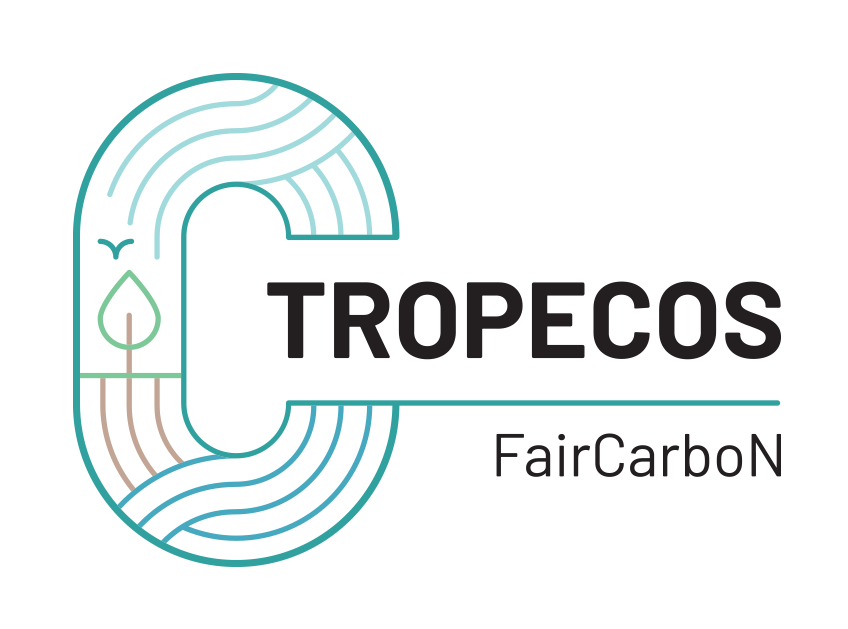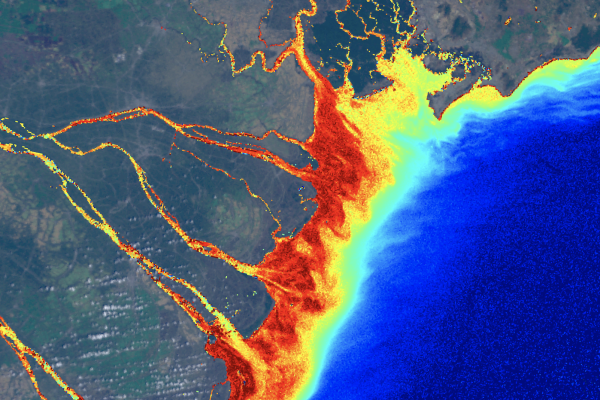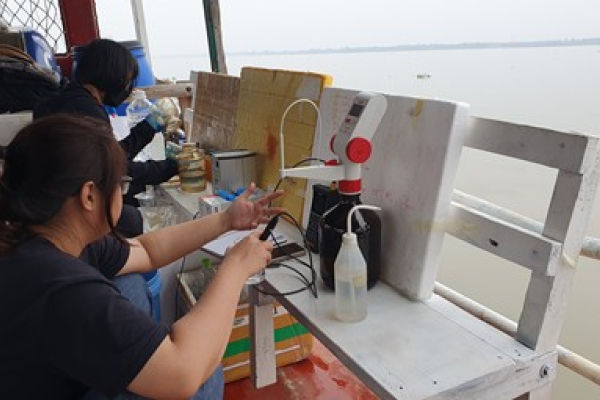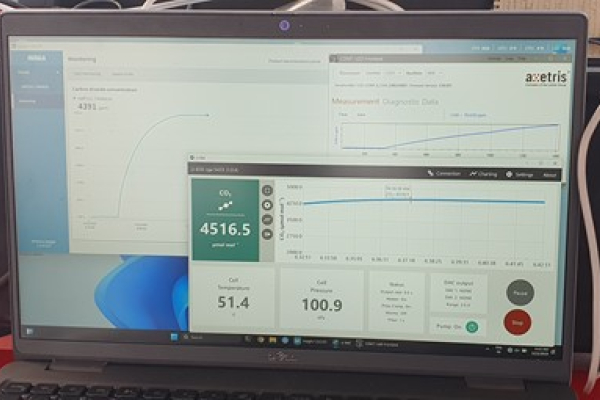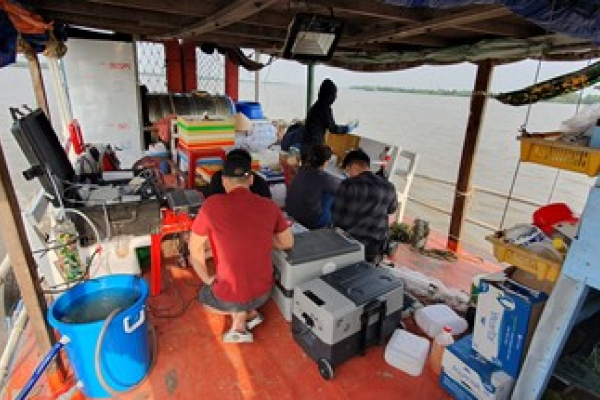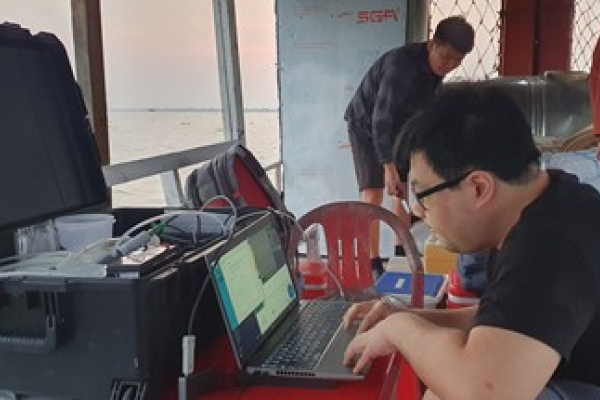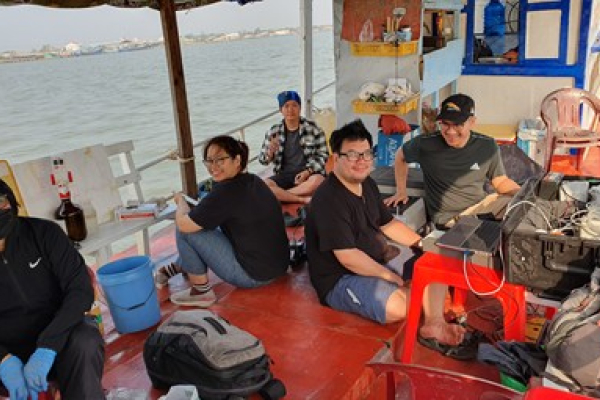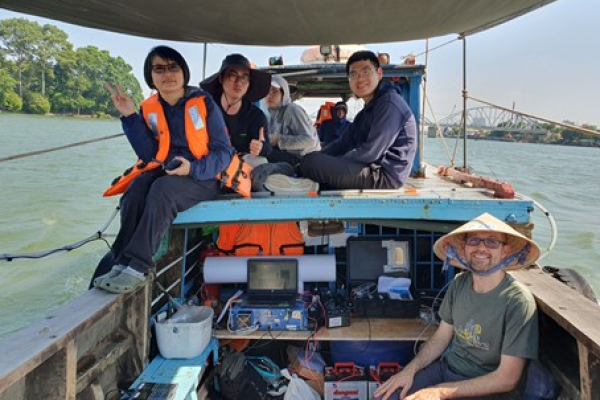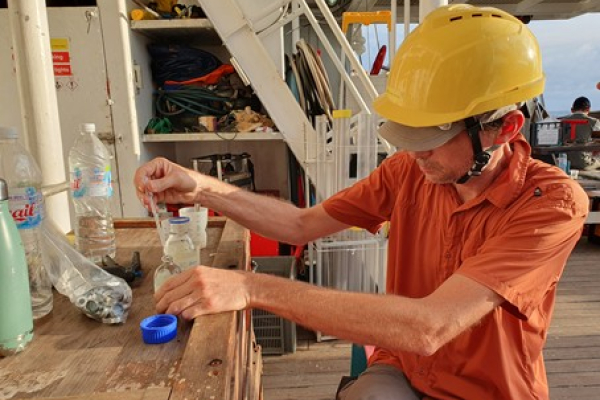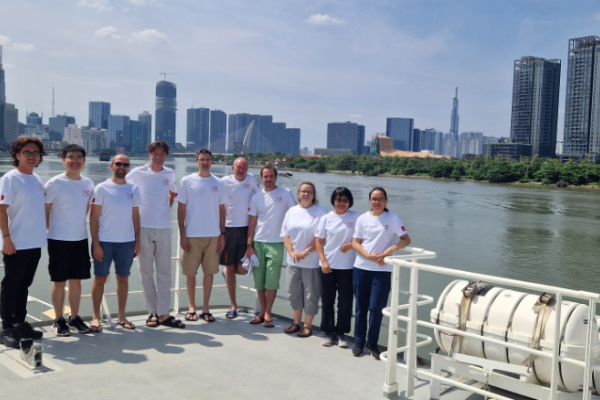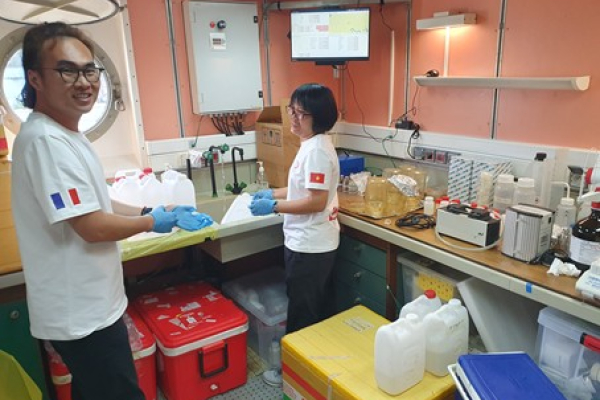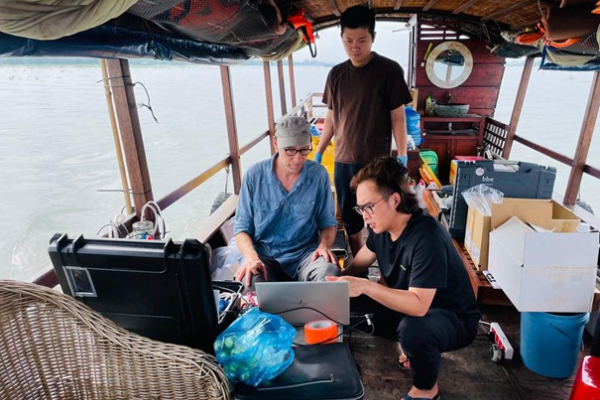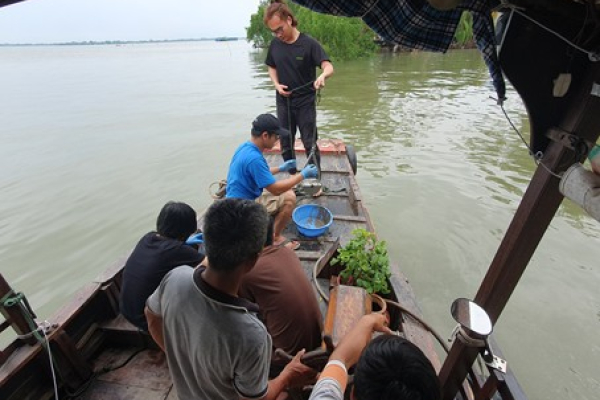TROPECOS Research in Vietnam is made in collaboration with colleagues from the Faculty of Environment and Natural Resources at the Ho Chi Minh University of Technology, and within the framework of the IRD LECZ-CARE International Joint Laboratory

TROPECOS activities in the region of Ho Chi Minh City occur in the framework of The IRD International Joint Laboratory CARE in collaboration with University Grenoble Alpes/Grenoble INP and with the Vietnamese partners of the Polytechnic Institute of Ho Chi Minh City (HCMUT). Our research activities concern three study sites: the Saigon River estuary, the Mekong delta and the Can Gio mangrove
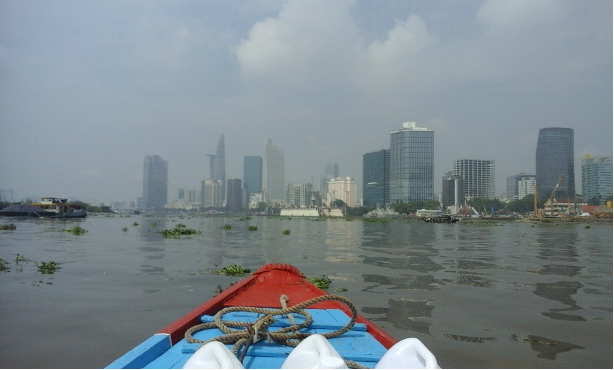
Sampling in Saigon River in the urban dense area of Ho Chi Minh City (credit Julien Némery)
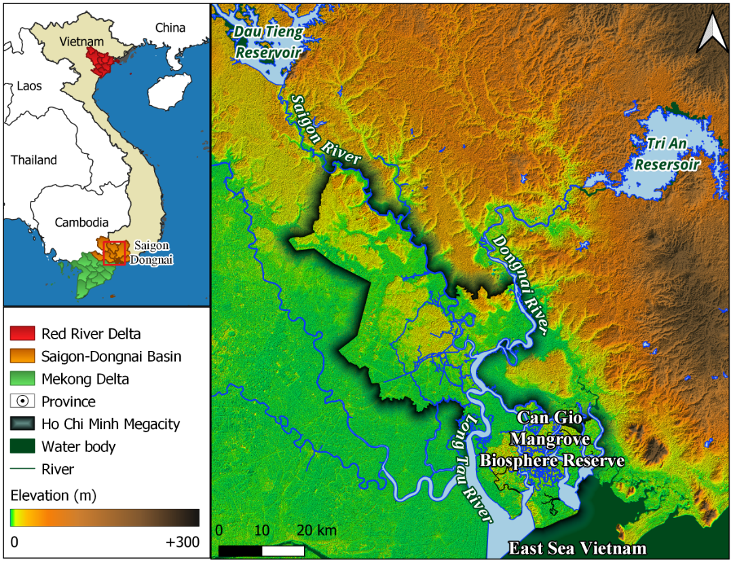
Map of the Saigon-DongNai river system in the Ho Chi Min Megacity in the south of Vietnam (from Nguyen et al 2022)
The Saigon River and its estuary receive large amounts of untreated domestic wastewaters from Ho Chi Minh City, increasing nutrients and organic carbon concentrations in water. The tidal influence in the estuary increases the residence time of waters during the dry season and lead to intense eutrophication (high chlorophyll a concentrations and low oxygenation, Nguyen et al 2019, Camenen et al 2021 ; Nguyen et al 2021). These conditions are also favorable for GES production and emissions along the salinity gradient of the Saigon estuary (Nguyen et al 2022).
The Mekong delta, nearby the Saigon DongNai River system is also densely populated with about 20M inhabitants and intense agricultural practices and aquaculture. This delta develops a very large and regional river plume with impacts on the continental shelf (Borges et al 2018).
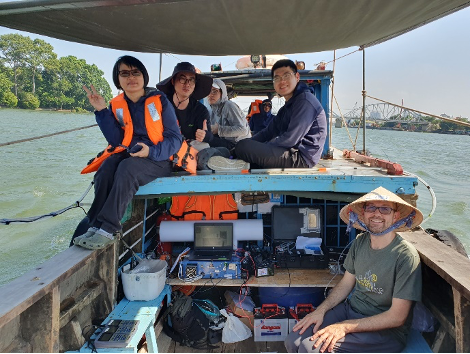
Sampling on a local boat with instruments for CO2, CH4 and N2O measurements (Credit Julien Némery).

Sampling with french scientific boat ANTEA in the Mekong Delta coastal area (PLUME cruise campaign june-july 2024 (Credit Julien Némery).
The mangroves of Can Gio is located in the north of the Mekong Delta, Vietnam (10°30′N, 106°52′E). The mangroves of Can Gio are nationally important because they are the only buffer between the sea and Ho Chí Minh City, the most populated city in Vietnam. Can Gio is protected as part of the Can Gio World Biosphere Reserve (UNESCO-MAB). After forest destruction caused by the war between the United States and Vietnam, this forest has been progressively replanted, notably with Rhizophora apiculata Blume, a common species used in mangrove rehabilitation projects in the Mekong Delta and elsewhere (Arnaud et al. 2021). There are now several species. The tidal regime of Can Gio is semidiurnal. The frequency with which mangroves are inundated ranges from twice/month to twice/day (van Loon et al., 2007). The mangroves of Can Gio occupy an area that extends from below the mean sea level to more than 2 m above it. Can Gio is comparable to other carbon rich deltaic mangroves from the Indo-Pacific in terms of organic carbon content, sediment particle size distribution and nutrient concentrations of the soil (Arnaud et al., 2019).

In-situ collection of root exudates in Can Gio (Credit: Huyen Dang)

Soil core collection in Can Gio (credit Huyen Dang)
References :
Nguyen AT, Némery J, Gratiot N, Dao TS, Le TTM, Baduel C, Garnier J (2022) Does eutrophication enhance greenhouse gas emissions in urbanized tropical estuaries? Environmental Pollution 303, 119105 https://doi.org/10.1016/j.envpol.2022.119105
Nguyen TA, Némery J, Gratiot N, Garnier J, Dao TS, Thieu V, G. Laruelle (2021) Biogeochemical functioning of an urbanized tropical estuary: implementing the generic C-GEM (reactive transport) model. Science of The Total Environment 784, 147261 https://doi.org/10.1016/j.scitotenv.2021.147261
Camenen B, Gratiot N, Cohard JA, Gard F, Nguyen AT, Tran VQ, Dramais G, van Emmerik T, Némery J (2021) Monitoring discharge in a tidal river using water level observations: application on the Saigon River, Vietnam. Science of The Total Environment 761, 143195 https://doi.org/10.1016/j.scitotenv.2020.143195
Nguyen TTN, Némery J, Gratiot N; Strady E; Tran VQ; Nguyen AT; Aimé J; Peyne A (2019) Nutrient dynamics and eutrophication risk assessment in the tropical river system of Saigon – Dongnai (Southern Vietnam). Science of The Total Environment 653, 370-383 doi.org/10.1016/j.scitotenv.2018.10.319
Borges A.V., Abril G. and Bouillon S. (2018) Carbon dynamics and CO2 and CH4 outgassing in the Mekong Delta. Biogeosciences 15: 1093-1114. https://doi.org/10.5194/bg-15-1093-2018
